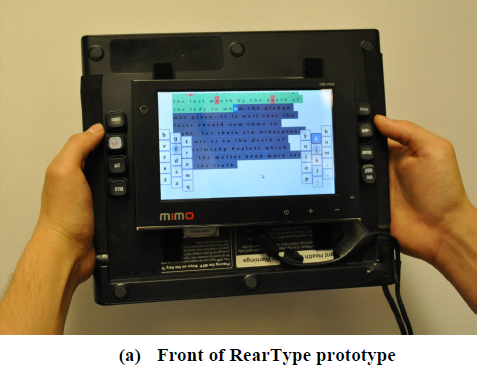Microsoft's RearType: Physical keys to the iPad, Kindle and tablet kingdoms?

Microsoft's product groups are busy crafting their answer(s) to the Apple iPad. But Microsoft Research is working on slate/tablet-related projects of its own, including a way to add physical keys to the backs of these kinds of mobile-computing devices.
Microsoft Research's RearType project is dedicated to finding a way affix keys to the backs of all kinds of tablets and slates, but in a way that users can reach them by gripping the sides of the devices.

RearType is described in a new white paper, dated September 2010. That paper, entitled, "RearType: Text Entry Using Keys on the Back of a Device," is authored by two Microsoft researchers, one author from RWTH Aachen university in Germany and two authors from the University of Toronto.
The RearType paper describes the project as follows:
"Our goal is a system that provides the tactile feedback and familiarity of a regular keyboard without cluttering the front of the display, ameliorates the occlusion problem inherent in direct on-screen touch and pen input, does not use the valuable screen real-estate taken up by an on-screen keyboard, leverages users existing skills in touch-typing on a regular physical QWERTY keyboard, and allows for text entry in highly mobile usage scenarios."
After building a prototype, the researchers put it through its paces with 12 study participants who were expert QWERTY typists. According to the paper, with one hour of training, typing speed in English averaged 15.1 words per minute, which "was not statistically different from their performance with a touchscreen soft keyboard."
As with all Microsoft Research projects, there's no guarantee when or even if RearType will find its way into shipping products.
I am not a fan of a soft keyboard on a PC (though the one on the iPad i bought is a lot easier to use than I expected). I don't mind the mini-keyboard on my Kindle 2, though it does take up an awful lot of room on the device. Still, I'm not sure I'm ready for keys on the back of my slate. You?